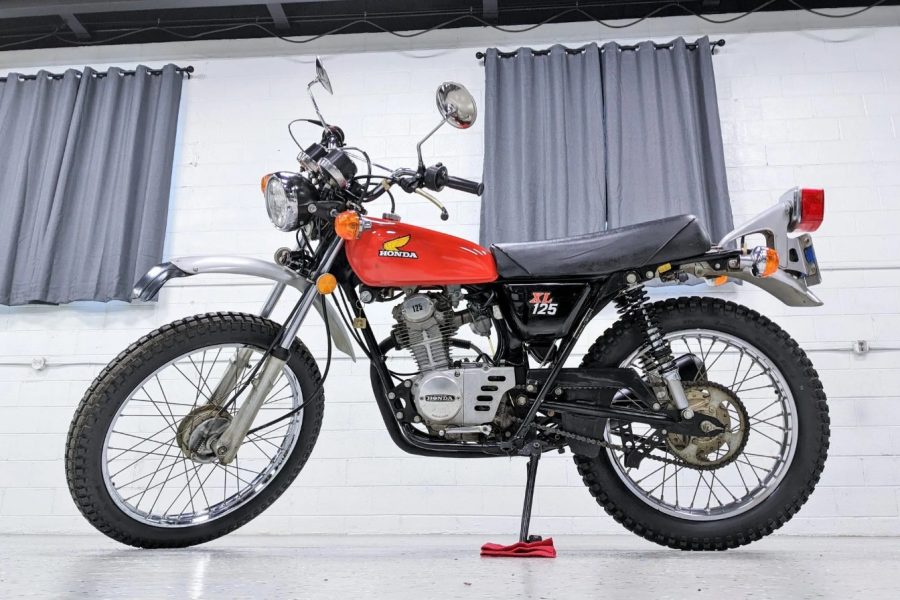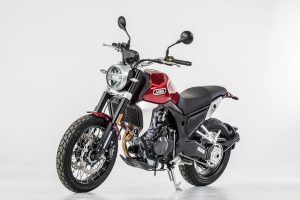Honda has several iconic series of motorcycles. The CB lineup, the GL lineup, the CR lineup—these were genre-defining machines.
One series that doesn’t get enough respect for its place in history: The XL line of dual sport bikes. Or at least, they didn’t get much respect in the past. By the looks of this recently-endedBring a Trailer auction, someone, somewhere, has an almost insane love for the machines—or maybe prices are just rising, like they are for all other bikes?
The first proper dual-sports
Honda’s XL series kicked off in the early 1970s and quickly established a reputation for reliable performance. Through the decade and beyond, there were several displacement options, including 75cc, 125 cc, 250 cc, 350 cc, 500 cc and more. ADVwriter The Bear did an impressive amount of round-the-world wandering on an XL250, and many other bike overlanders of that time period did the same.
The smaller XL125 hit the US market in 1974, replacing the more scrambler-styled SL125. At its debut, the XL125 was far from the fastest offroad machine available. Looking at it closely, you see it has long-travel suspension, knobby tires, a straight seat and wide bars, but it also has a small four-stroke engine and a complete light kit. What was Honda doing here?

It was a dual sport, but this one obviously didn’t see much dirt … or much pavement. Photo: Bring a Trailer
Honda was basically laying the pattern for the modern dual sport bike. Other manufacturers – Yamaha, in particular – spent the 1970s building low-performance two-stroke duallies, usually called “enduros,” with lights and street plates, but these days, those machines are mostly in the dustbin of history. Honda’s pattern of a stripped-down bike with a four-stroke, single-cylinder engine began to take over through the 1980s, and that’s all you can buy today.
Taking a closer look at the XL125, you can see it’s simple. The 122 cc OHC engine was based on the SL125 powerplant, but with updated top end. Contemporary reviews considered this a technological step forward, and if you compare it to a two-stroke, it probably was. These days, it’s pretty basic compared to the latest fuel-injected thumpers with multiple engine maps, etc. The early XL came with a 6V electric system, and a kickstarter—no electric boot.
If you see the tach, you might note the 9,500 rpm redline. Alas, even when you revved the guts out of it (which is where the engine was made to run), the XL125 did well to get far past 50 mph on its 12.5-ish horsepower engine.
Drum brakes came standard. Monoshock suspension wasn’t common in the early 1970s, so the XL got a dual-shock setup in back and small telescopic forks up front, with offset axle. Even when the bike debuted, that suspension was weak, with Cycle’s review saying the shocks were “not acceptable by 1975 standards … Shocks that dampen slightly cost little more than ones that have all the parts but don’t work at all.” Yikes. Harsh words for a harsh ride. Cycle did like the forks, at least.
Cycle also panned the trials-style tires (even in the 1970s, journos were complaining about dual sport tires’ offroad insufficiency), and said “the sluggish engine doesn’t enhance the XL 125’s off-road handling. Any bike that’s down on power like the XL 125 will steer poorly in the rough and out of turns.”
At least it was lightweight, around 234 pounds, unlike modern Honda duallies, which seem to suffer from the use of Chinesium or similarly-heavy alloys in their construction.

Check out those clocks, including the super-low mileage. Photo: Bring a Trailer
Astronomical pricing!
Considering all that, the XL125 sounds like a pretty typical Honda dual sport of the 1970s and 1980s: Easy to maintain, with low performance but high reliability. The sort of bike that made good sense as a practical runabout a few decades back, maybe even a RTW bike in the right circumstances, if you didn’t mind life in the slow lane. But, nothing to be too excited about—not a performance leader, and certainly not super-rare.
So,why would someone be willing to spend $15,000 on it?
This auction on Bring a Trailer周二结束,看到最后的投标reach $14,999. Wow.
Maybe it’s because of the ultra-low 311-mile odometer reading. But, this 1974 XL125, whichsold last spring on Bring a Trailer, went for $3,269, and it was in pretty decent shape. Not 311-mile shape, but it looked like it had been well-kept.

Gorgeous condition, but is it worth $15k? Photo: Bring a Trailer
Take a look at what else you can get for $14,999: A brand-new Husqvarna 701 Enduro, with lots of money left over for gas ($12,499US MSRP). A brand-new Suzuki DR650S with lots of money left over for farkles, gas, and a pretty serious ADV trip ($6,849 US MSRP). Or this other1975 Honda XL125 in Pottstown, Pennsylvania, with 2,400 miles on the odometer and a clear title and asking price of $1,500—you’d have enough money left over to buy any modern dirt bike on the market.
Honestly, I don’t know what’s going on with this BaT auction, but I applaud the seller on their mad success. Now, I’m off to rummage through my dad’s collection of Bronze Era comic books; if a ’75 XL is worth $15,000, maybe his Magnus: Robot Fighter back issues are worth a few hundred?







